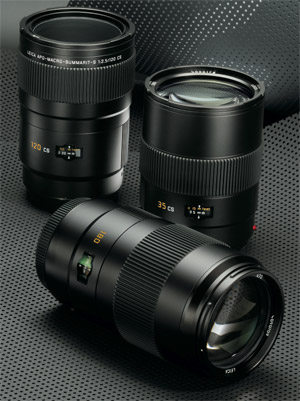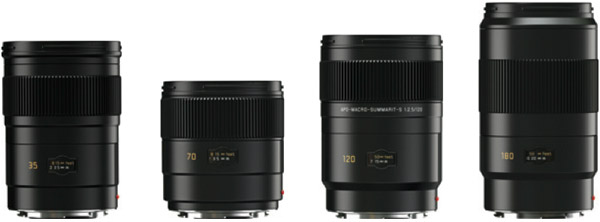
$220 SAVE $130 = 37.0% Western Digital 16.0TB Western Digital Ultrastar DC HC550 3.5-in… in Storage: Hard Drives
|

|

|

|

|

|

|

|
Overview of Leica S Lenses
Related: digital sensor, Leica M, Leica medium format, Leica S Typ 006, medium format
Leica makes very some pretty amazing claims about the S2 lens line:
The S lenses are in a class of their own. Peak performance at full aperture and minimum focus are a requirement for all Leica S lenses. All lenses are optimized for the image sensor in the S2. They are devoid of imaging errors, manufactured from the highest quality glass and metals, and adjusted by hand. Digital correction of optical errors is unnecessary and the image sensor can translate the optical performance into the perfect picture without compromising image quality.
Leica goes on to say that:
All S lenses stand out in attaining their maximum optical performance at full aperture...
That latter claim is disproven by Leica’s own MTF charts for the 35mm and 70mm lenses, and of course real world pictures should quickly establish its veracity. But all indications suggest that the S lenses are very special optics.
For more on MTF of the S lenses, see Erwin Putts discussion. What’s curious is the difference in his MTF charts versus those supplied by Leica— a large dip in the outer mid-zone, indicating more field cuvature than the Leica MTF graph shows. Fields shooting will show which is more accurate.
All of the S lenses uses special optical glass eg “low dispersion”, “anomalous partial dispersion”. Two of them use aspherical elements, and they all are corrected for close-up focus as well as distance.
The following statement might be a veiled reference to the Hasselblad approach of not fully correcting lenses, and instead relying on software to do so:
Pictures that are already optically perfect at the time they are taken do not need corrective post-processing.
But it’s all a bit silly— what matters is the final result, and these days, post-processing is mandatory anyway. The system has to work, and details don’t matter so much, so long as they don’t interfere with getting the job done.
The current Leica brochure states that “Leica will be rapidly expanding its line”, while “the generously-sized S bayonet mount keeps all lens options available”. That latter quote could be taken to mean that a fast f/1.4 or f/1.8 lens might appear.
Lens shutter
The S lenses optionally come with a central shutter (CS). This allows flash sync up to 1/500 second. The CS versions are heavier, and cost a bit more.
Sensor resolution is only potential
When one looks at the resolution of other digital backs offering up to 60 megapixels (1.6 times as many pixels), it’s important to realizes that 60 megapixels represents a 26% linear increase in resolution— about the same proportion as a 19 megapixel versus 12 megapixel DSLR. In other words, not as much as the numbers seem to suggest.
In reality, it means that a 37.5 megapixel camera might be sharper on average than a 60 megapixel camera, depending on all those factors, including one’s technique and the lenses used. By having a system with top-grade lenses, perfect lens-mount-to-sensor alignment, and accurate autofocus, your odds of first class results go way up.
How many days do you want to waste testing lenses versus shooting? Leica’s claim at least suggest that you might be able to spend zero time testing (“hand assembled”).
My extensive experience with a large variety of Canon and Nikon lenses tells me that only about 1 in 3 lenses is free of problems (yes, 2 of 3 lenses have some issue, most are minor, but some have serious issues. I’ve had almost no trouble with Zeiss for Nikon/Canon, so there are alternatives there to OEM.
The lens line
The S lenses are in very short supply as of July 2010, but that will change with time. Check here for availability.
The four lenses available as of July 2010 all offer a maximum aperture of f/2.5, except for the f/3.4 180mm. They include:
- 35mm f/2.5 Summarit-S ASPH (28mm equivalent on 35mm);
- 70mm f/2.5 Summarit-S (56mm equivalent on 35mm);
- 120mm f/2.5 Summarit-S (96mm equivalent on 35mm);
- 180mm f/3.4 Summarit-S (144mm equivalent on 35mm);
More on lenses on the following pages.
Learning more
Want the full scoop on the Leica S2 and lenses?
Read my in-depth report Guide to Leica. Learn more. Subscribe now!
Seagate 22TB IronWolf Pro 7200 rpm SATA III 3.5" Internal NAS HDD (CMR)
SAVE $100



















